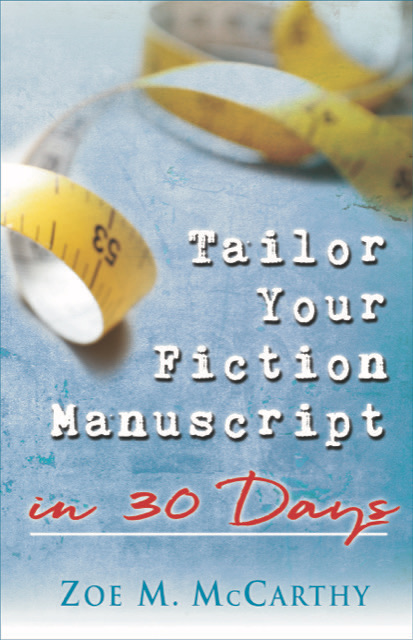
Zoe has developed a guiding resource for beginning writers. Her method is designed for brainstorming, shaping, and revising an early draft of a manuscript. General and specific tips are offered for applying rules of writing to enhance one’s story for a workable second draft. By exploring the plot line of Love Comes Softly writers may examine their own work for stronger plot and characterization. Valuable tools are offered that enable the writer to develop a workable draft in 30 days! —Yvonne Lehman, award-winning, best-selling author of 48 novels
Learn more at the end of the post.
Besides looking for heavier story problems, you can look below for simple errors that crop up in your critique partners’ submissions.
Simple Edits
1. Then. Place a comma before “then” in sentences.
Incorrect: Elmo raised his eyebrows then smiled.
Correct: Elmo raised his eyebrows, then smiled.
2. Was going to or am going to. Shorten to “would” or “will.”
Wordy: Amy was going to hate her gift. “I’m going to buy you something else,” Elmo said.
Better: Amy would hate her gift. “I’ll buy you something else,” Elmo said.
3. So that. Can often delete “that.” No comma before “so that.”
Incorrect and Wordy: Elmo donated fifty dollars, so that Amy would think he cared.
Correct: Elmo donated fifty dollars so Amy would think he cared.
4. Already. The word is often unnecessary.
Wordy: Elmo already had the five dollars he needed. By now, Amy should have already arrived at the store.
Better: Elmo had the five dollars he needed. By now, Amy should have arrived at the store.
5. That. Can often delete “that.”
Wordy: Elmo feared that Amy liked Barry. He hoped that she’d change her mind.
Better: Elmo feared Amy liked Barry. He hoped she’d change her mind.
6. Just. Can often delete “just.”
Wordy: Amy turned to a group just entering the building.
Better: Amy turned to a group entering the building.
7. Suddenly. Should delete most occurrences of “suddenly.”
Wordy: Elmo calmed, then suddenly a policeman appeared.
Better: Elmo calmed, then a policeman appeared.
8. Began to or started to. Can often delete these phrases, especially when the character is not stopped.
Wordy: When Amy began to open her mouth to speak, the bus arrived. Elmo stood and started to walk to the bus.
Better: When Amy opened her mouth to speak, the bus arrived. Elmo stood and walked to the bus.
9. Into, in, or in to. “Into” is used with actions. “In” is used to show position. “In to” is used when the “to” belongs with a verb that follows “to.”
Correct: Elmo drove to the library. With a book in his hand and planning to walk in toreturn a library book, Elmo opened the door. He stepped into the library, returned the book, then strolled into the aisle labeled Mysteries, where he stumbled into Amy.
10. There was or wasn’t. It was or wasn’t. Rewrite sentences using “there was,” “there wasn’t,” “it was,” or “it wasn’t.”
Wordy and passive: Because there was no sign of a struggle, it was believed the perpetrator attacked her by surprise.
Better: Because authorities found no sign of a struggle, they believed the perpetrator attacked her by surprise.
What other quick fixes would you recommend to critique partners?
I finished reading Tailor Your Fiction Manuscript in 30 Days. I have AND will highly recommend it to anyone who dabbles in fiction. It’s one of the best “how to” books I’ve ever read.
—Marsha Hubler, Director Montrose Christian Writers Conference
If you want to increase your chance of hearing yes instead of sorry or not a fit for our list at this time, this book is for you. If you want to develop stronger story plots with characters that are hard to put down, this book is for you. Through McCarthy’s checklists and helpful exercises and corresponding examples, you will learn how to raise the tension, hone your voice, and polish your manuscript. I need this book for my clients and the many conferees I meet at writer’s conferences around the country. Thank you, Zoe. A huge, #thumbsup, for Tailor Your Fiction Manuscript in 30 Days.
—Diana L. Flegal, literary agent, and freelance editor
Tailor Your Fiction Manuscript is a self-editing encyclopedia! Each chapter sets up the targeted technique, examples show what to look for in your manuscript, then proven actions are provided to take your writing to the next level. Whether you are a seasoned writer or a newbie, you need this book!
—Sally Shupe, freelance editor, aspiring author
Need to rework your book? Zoe M. McCarthy’s step-by-step reference guide leads you through the process, helping you fight feeling overwhelmed and wrangle your manuscript into publishable shape in 30 days. Tailor Your Manuscript delivers a clear and comprehensive action plan.
—Elizabeth Spann Craig, Twitteriffic owner, bestselling cozy mystery author of the “Myrtle Clover Mysteries,” the “Southern Quilting Mysteries,” and the “Memphis Barbeque Mysteries,” http://elizabethspanncraig.com/blog/
Zoe’s book, Tailor Your Fiction Manuscript in 30 Days, is a fresh and innovative refocusing of your novel or novella. Through a few simple—and fun—steps, Zoe helps writers take their not-ready-for-publication and/or rejected manuscripts to a spit-polish finish. Writing is hard work, yes, but it doesn’t have to be difficult.
—Eva Marie Everson, best-selling and multiple award-winning author, conference director, president of Word Weavers International, Inc.
Tailor Your Fiction Manuscript in 30 Days is chock-full of practical techniques. Numerous examples clarify problem areas and provide workable solutions. The action steps and blah busters McCarthy suggests will help you improve every sentence, every paragraph of your novel. If you follow her advice and implement her strategies, a publisher will be much more likely to issue you a contract.
—Denise K. Loock, freelance editor, lightningeditingservices.com
A concise, detailed, step by step resource for all writers.
— Jamie West, editor coordinator, Pelican Book Group
Zoe’s writing blog has always intrigued me. As a high school English teacher, I can attest that her tips on good grammar and her hints for excellent sentence and paragraph structure are spot on. But as an author, I also appreciate her ever-present advice that excellent skills are not enough: you must tell a good story, too. This book clearly shows how to do it all.
—Tanya Hanson, “Writing the Trails to Tenderness,” author of Christmas Lights, Outlaw Heart, Hearts Crossing Ranch anthology, and coming in 2019, Tainted Lady, Heart of Hope, and Angel Heart. www.tanyahanson.com
McCarthy crafted an amazing self-help book that will strengthen any writer, whether new or seasoned, with guidance and self-evaluation tools.
–Erin Unger, author of Practicing Murder, releasing in 2019





 RSS - Posts
RSS - Posts



The simple edits you address make your book a good reference on my bookshelf.
These were problems I found in a story I wrote twenty-five years ago. So I decided to share them with others.They creep in so easily. Thanks for your comment, Sally Jo.